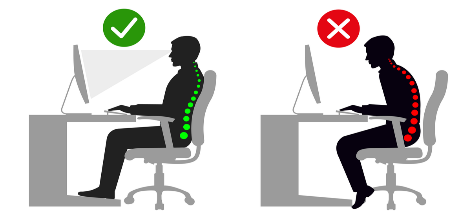Overview

Ergonomics is the practice of fitting the job to the individual, which can help prevent work-related musculoskeletal injuries. Examples of musculoskeletal injuries include carpal tunnel syndrome, tendinitis, and low back pain. The goal of the Ergonomics Program at Clemson University is to help departments and employees identify risk factors that can contribute to the development of work-related musculoskeletal injuries and provide solutions and guidance to eliminate or reduce these risk factors.
Risk factors for the development of musculoskeletal injuries include (but are not limited to) awkward postures, repetitive tasks, and/or forceful motions. These types of injuries are usually cumulative; they develop over time, rather than as a result of a single event. By evaluating work tasks that involve these risk factors and finding solutions to better fit the person to the work they do, musculoskeletal injuries can be prevented.
The Occupational Safety and Health Administration website (OSHA) provides further information on the details of Musculoskeletal Disorders (MSDs) and their contributing risk factors and solutions.
